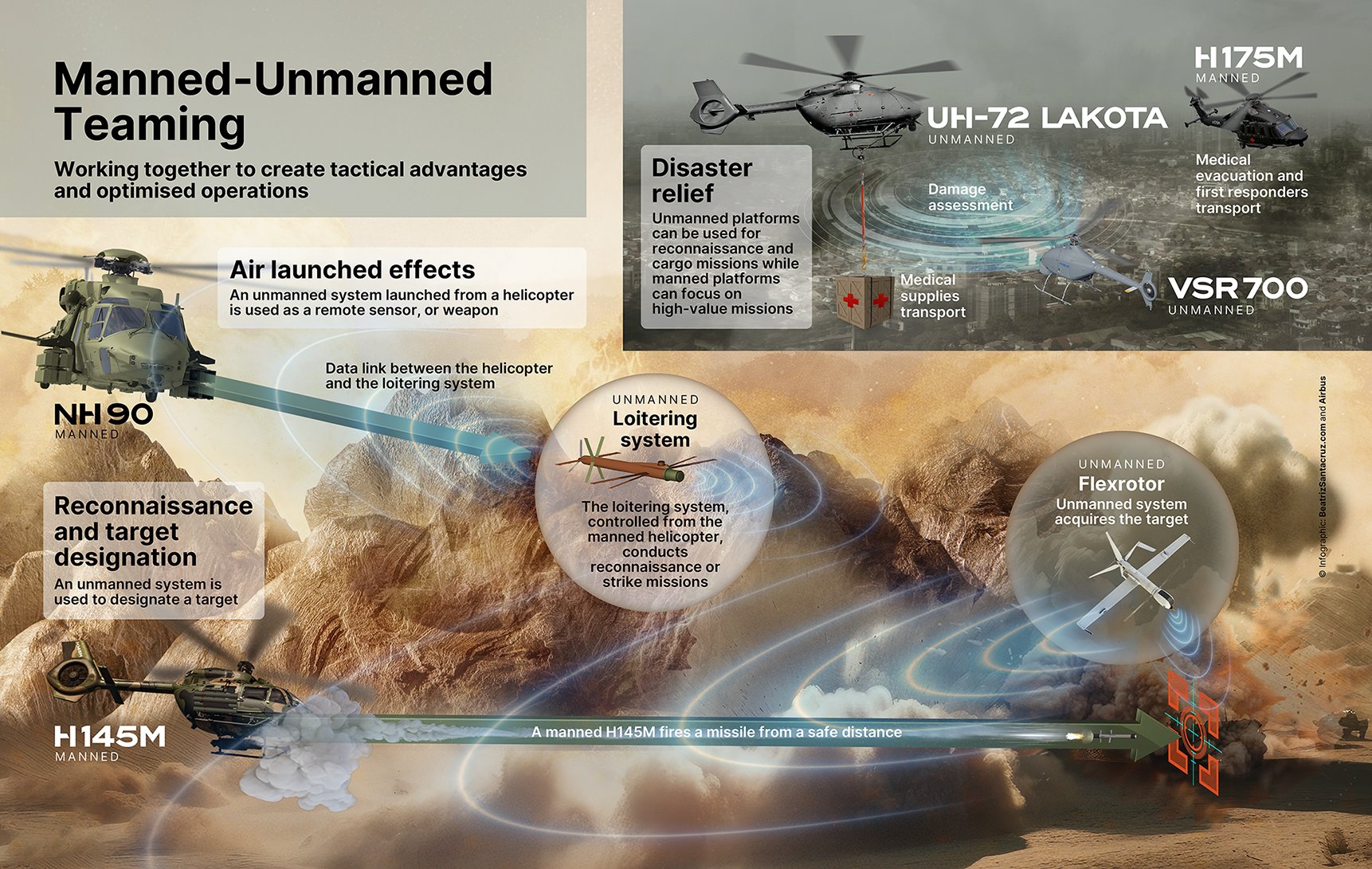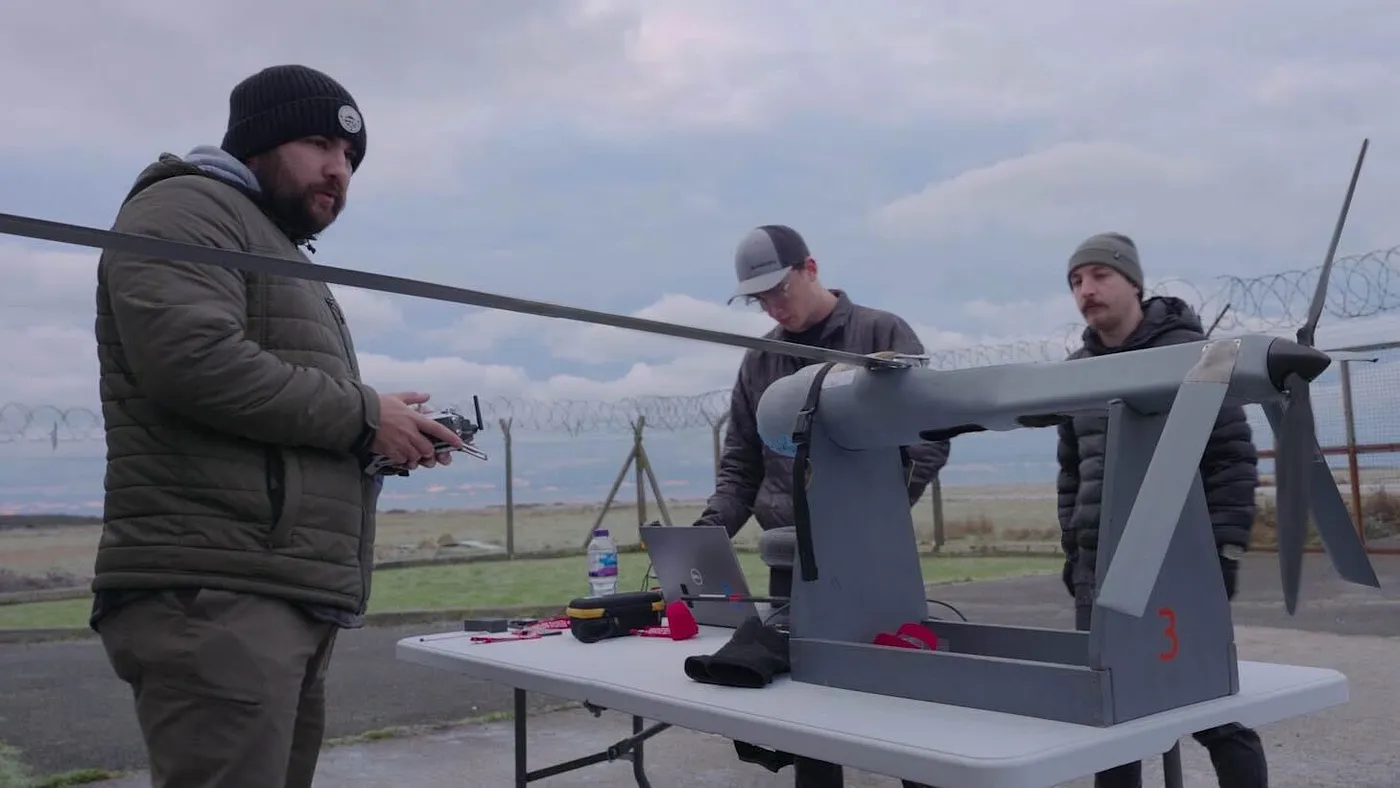Re: Bundesheer beschafft AW169M
Verfasst: Fr 2. Aug 2024, 12:30
Stimmt schon aber ich würde mir noch so was wie hellfire für gepanzerte Ziele wünschen und mistral wie von Maro schon erwähnt.
Forum für Österreichs Militärgeschichte
https://www.doppeladler.com/da/forum/
Wie lange hätte man dafür noch Zeit, bis die Italiener klar Schiff machen?maro-airpower hat geschrieben: ↑Do 1. Aug 2024, 19:11Tjo....anschauen.Verweigerer hat geschrieben: ↑Do 1. Aug 2024, 11:30 Man wird sich doch wohl nicht am Leonardo-Stand gar die M-346FA auf der Videowall näher angesehen haben? ;-)
Die Italiener werden noch 20 bestellen....und wir könnten mitrutschen...und so wie bei der C-390 einen besseren Deal bekommen....müsst sich halt wer trauen drunt am Donaukanal...
qsglx hat geschrieben: ↑Fr 2. Aug 2024, 13:03 War auch nur ein Beispiel sowas wie Spike NLOS oder ER wäre ja auch denkbar. Allerdings weiß ich nicht ob Spike wirklich leichter ist als die Hellfire. Aber wenigstens irgendetwas um gehärtete und gepanzerte Ziele zu bekämpfen, denn da stoßen die 70mm Raketen schnell an ihre Grenzen, vor allem was die Reichweite angeht. Die Mistral würde ich mir nicht wünschen um gehärtete Ziele zu bekämpfen sondern um Drohnen und andere Hubschrauber effektiv bekämpfen zu können.
Die SPIKE ER2 hat eine größere Reichweite und ist deutlich leichter als die HELLFIRE II:
https://www.lockheedmartin.com/content/ ... Card-1.pdfWeight ......................................................49.4 kg (109 lb)
https://www.lockheedmartin.com/content/ ... Card-1.pdfM299 LAUNCHER
LAUNCHER WEIGHT
- EMPTY
4-Rail 66 kg (145.50 lb)
2-Rail 44 kg (97 lb)
- LOADED
4-Rail 259 kg (571 lb)
2-Rail 141 kg (310.85 lb)
https://www.rafael.co.il/system/spike-er2/34 Kg
Weight
https://eurospike.com/spike_er.min.htmlEffective Range 0.4 – 10 km
Round Weight 35 kg
Weapon System Weight
- Ground Launcher: 85 kg
- Helicopter ultra-light launcher: 27-30 kg (configuration dependent)
https://www.janes.com/osint-insights/de ... ays-uk-modRussia has lost more than a quarter of its fleet of Kamov Ka-52 ‘Hokum' attack helicopters during the eight months of war in Ukraine, the UK Ministry of Defence (MoD) has ascertained.
An Intelligence Update released by the MoD on 25 October noted that there have been at least 23 verified losses of Ka-52s out of a pre-war fleet of 90 such helicopters.
“This represents over 25% of the Russian Air Force's in-service fleet of 90 Ka-52s, and nearly half of Russia's total helicopter losses in Ukraine,” the MoD said, adding, “Russian attack helicopters have likely suffered particular attention from Ukrainian manportable air defence systems (MANPADS), while the helicopters frequently operate with less consistent top cover from combat jets than they would expect under Russian military doctrine.”
The Russians adapted coordination of their AEW aircraft with low-level fighter aircraft to counter AFU helicopter attack missions. When the Ukrainians employ their attack helicopters and the helicopter flares up to fire rockets, the Russian fighter aircraft fires an air-to-air missile at the second helicopter. The majority of the missile's flight path is passive, emitting no signals, and it activates its seeker only when approaching the designated area, searching for its target autonomously.
In this situation, the helicopter pilot has only a few seconds to attempt evasive manoeuvres to avoid the incoming missile. There have been instances where AFU helicopters were unable to carry out the attack and were forced to land without shutting down the engines, repeating this process up to three times in a row. Unguided rockets have a large dispersion ellipse, making them primarily suitable for engaging area targets. The effectiveness of their application diminishes when only one helicopter is able to launch the rockets, reducing the quantity from 80 units, typically fired in pairs, to 40 units, significantly decreasing their overall effectiveness.
https://nllp.jallc.nato.int/iks/sharing ... iculum.pdfd. AFU Attack helicopters are primarily used as artillery platforms, launching unguided rockets from hover positions at maximum ranges from the security of Ukrainian-controlled territory. Because of this adaptation, there is minimal interaction required between helicopter crews and the low density and high demand forward aviation controllers. The main focus of the helicopter crews is interacting with the UAV operators who identify and transmit the enemy’s location for helicopter strikes. AFU has very effectively integrated attack helicopters with UAVs for reconnaissance, target designation, and target engagement. (Strategic, Operational, and Tactical).
3) Close Air Support:
a. The AFU changed their tactics of manned aircraft strikes at the beginning of the war due to the absence of deployed air defence systems. Once air defence systems were deployed, AFU adapted aircraft strikes: Ukraine, like the Russians, began to use planes and helicopters only to support ground forces at the tactical level, fearing to fly far beyond the front line. They are expensive and highly effective tools used along with howitzers and mortars. (Operational and Tactical).
b. The AFU has restrictions on the use of manned aircraft to support troops in order to increase aircraft survivability. (Operational and Tactical).
c. The AFU adapted the joint use of strike packages with both helicopters and airplanes to support AFU forces engaged in combat. This improved support and survivability of the force. (Operational and Tactical).
Ich stelle nicht die PAL infrage, sondern ihren Einsatz von einem relativ ungeschützten Hubschrauber aus. Den gleichen Effekt kann man mit bewaffneten Drohnen oder Loitering Munitions etwas günstiger und mit deutlich geringerem Risiko haben.
https://www.shephardmedia.com/news/air- ... army-demo/Shephard Defence Insight estimates the loitering munition has a flyaway unit cost of $150,000 and a gross unit cost of $202,500.


